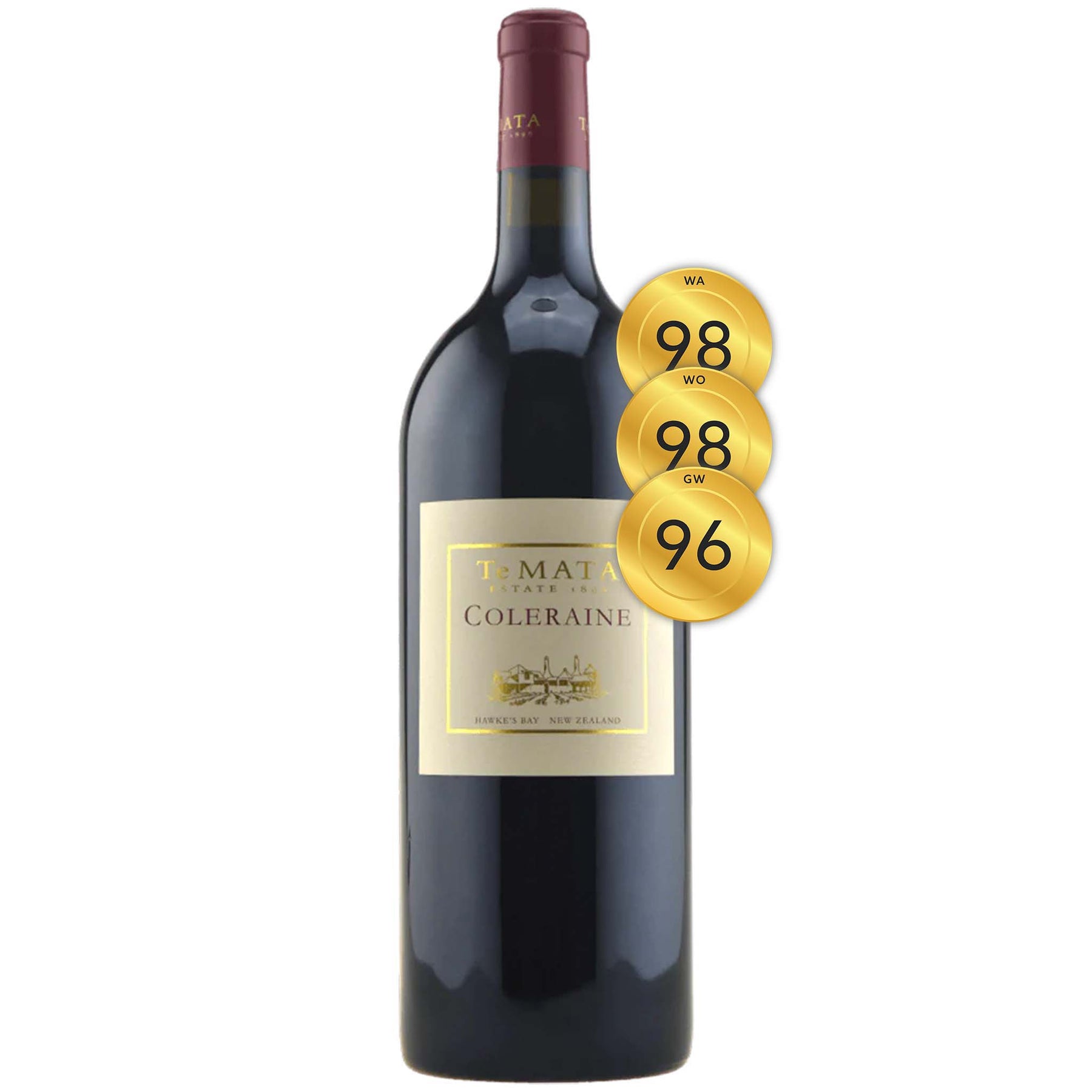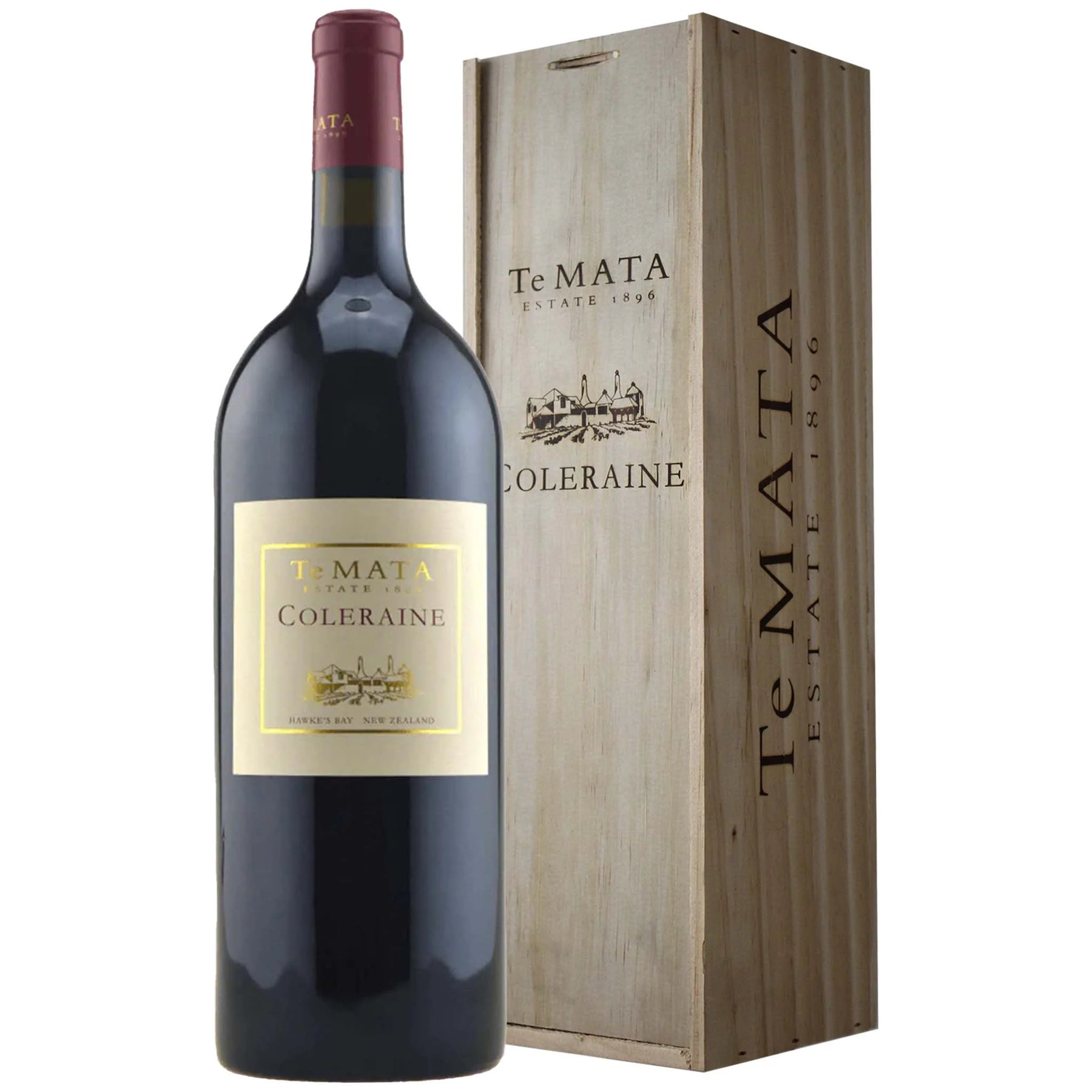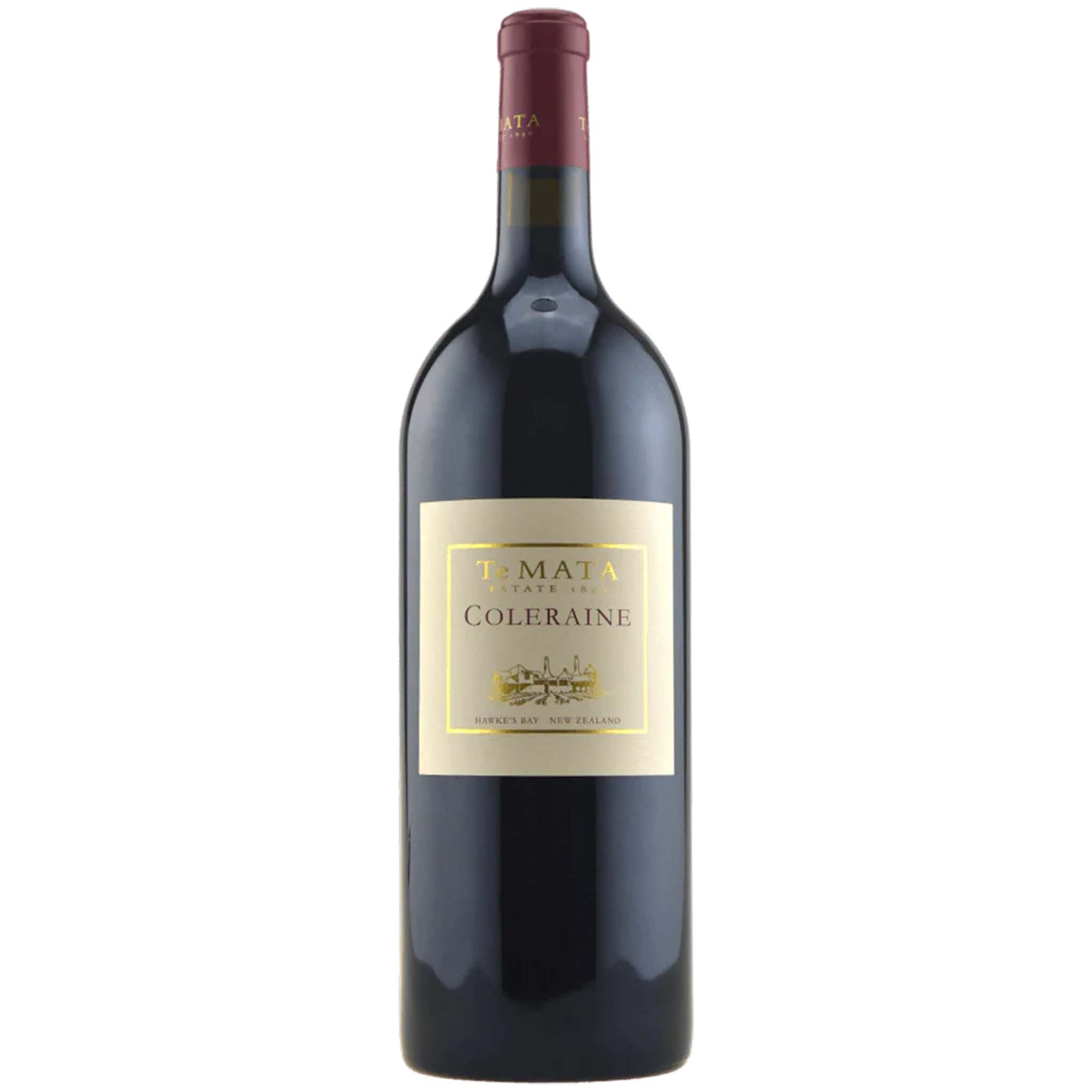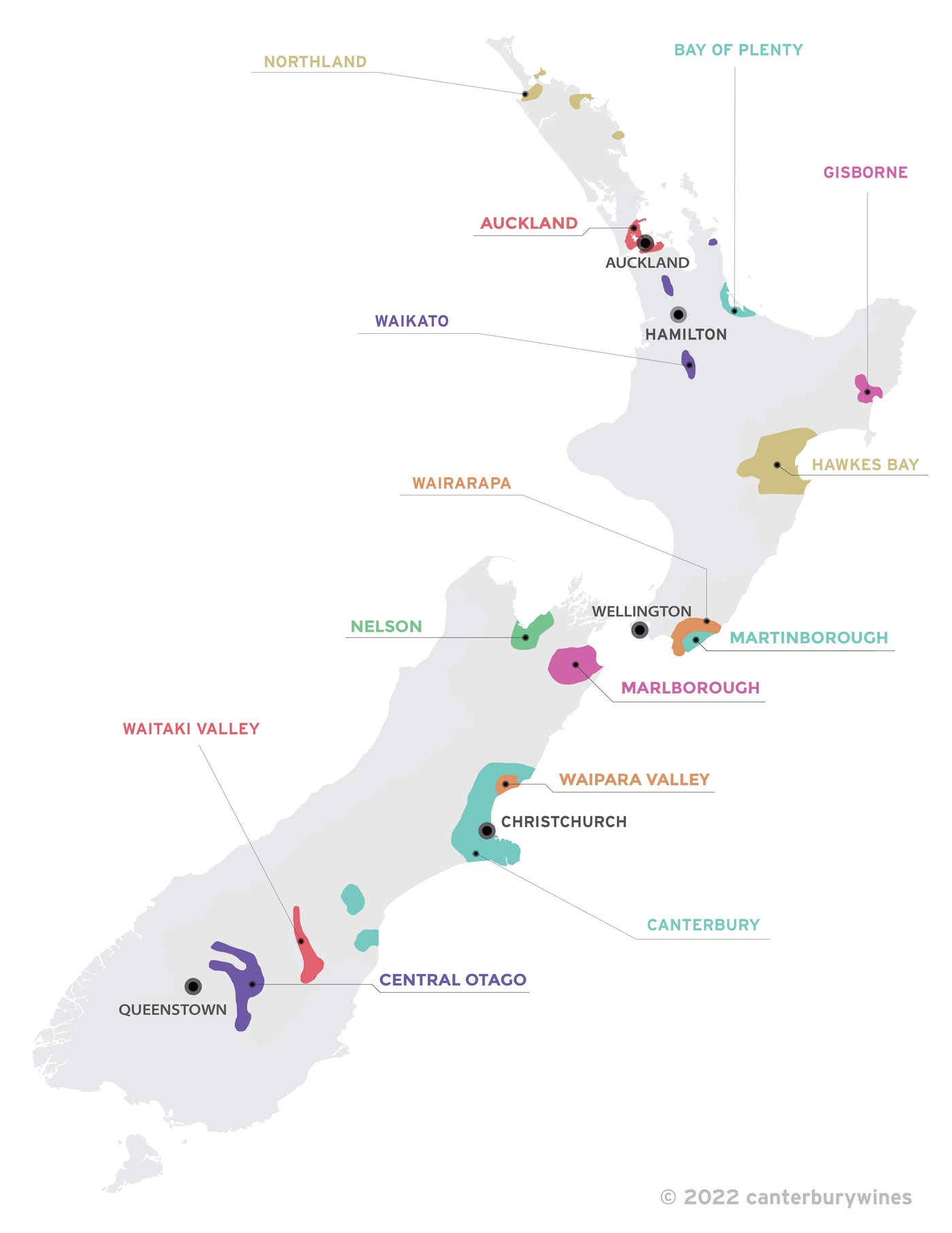


Te Mata Estate Coleraine 2023 (1500ml)
Style: Red Wine
Closure: Cork
Te Mata Estate Coleraine 2023 (1500ml)
Warehouse
34 Redland Drive
Vermont VIC 3133
Australia
Critic Score: 98
Alcohol: 13.5%
Size: 1500 ml
Drink by: 2075
Te Mata Estate was acquired by John Buck in 1974 and the Buck family have been producing Te Mata wines ever since. Coleraine is named after John's family ancestral hometown in Northern Ireland. Coleraine is Te Mata Estate's flagship wine and is regarded by many as New Zealand's finest red wine. First produced in 1982, Coleraine is a classic blend of cabernet sauvignon, merlot and cabernet franc.
"The elevation in all aspects of this wine from the already tremendously impressive Awatea is significant. Here, the tannins have a finer grain, the fruit is more persistent and the package is far more integrated and seamless. With raspberry, iodine, crushed shells, nori, pressed flowers, new lead pencil, tobacco, bramble and cassis, it is magnificent. Raw cocoa and the gentle and subtle creep of game/gristle/blood and sweet marrow indicate its direction later in life. I love this wine. I think I write that every time I taste it." Erin Larkin
The 2023 comprises 80% cabernet sauvignon, 15% merlot and 5% cabernet franc.
"If the Langton's Classification crossed the Tasman, Te Mata Coleraine would sit alongside Grange at its very pinnacle. Established, esteemed, outstanding – vintage after vintage, the glowing adjectives come thick and fast." Langtons
"The illustrious 2023 reigns supreme with a level of expression and finesse as robust as its lineage. A stately example of coastal cabernet, the Coleraine 23 harmonizes intricate varietal notes with an elegant structure and a power that feels both balanced and commanding. At its core lies the indomitable characteristics of cabernet the grape upon which Coleraines reign has always been built. Te Matas cabernet collection, sourced from seven noble selections across 24 vineyard parcels, is majestic in the Coleraine 23 blend, commanding a regal 80% of the composition. Joined by 15% merlot and a touch of 5% cabernet franc, this royal assembly reflects the multitude of soil types and vineyard sites that define our sub-regions. Coleraine is New Zealand's greatest red wine a true returning king in every sense." Te Mata Estate
Te Mata Estate Winery
Expert reviews
"The 2023 Coleraine comprises 80% Cabernet Sauvignon, 15% Merlot and 5% Cabernet Franc. This cuvée is not made to a recipe, rather as a selection of the best from each vintage. In 2023, due to the weather induced by Cyclone Gabrielle, which landed in early February (the second or third), the strongest performer was the Cabernet Sauvignon due to bunch architecture, small berries, thick skins and, in this case, the low-vigor rootstocks and the chicory in between the rows. Te Mata invests heavily into research and development in the vineyards, which really assists in a vintage like 2023, which imposes challenges. The elevation in all aspects of this wine from the already tremendously impressive Awatea is significant. Here, the tannins have a finer grain, the fruit is more persistent and the package is far more integrated and seamless. With raspberry, iodine, crushed shells, nori, pressed flowers, new lead pencil, tobacco, bramble and cassis, it is magnificent. Raw cocoa and the gentle and subtle creep of game/gristle/blood and sweet marrow indicate its direction later in life. I love this wine. I think I write that every time I taste it. 13.5% alcohol, sealed under natural cork. Drink: 2024-2043." Erin Larkin, Wine Advocate - 98 points
"Stunning bouquet ... engaging and captivating. The palate exhibits immense concentration and presence, superbly enhanced by silky texture and layers of chalky tannins. The acidity is perfectly pitched and provides freshness to this long-living wine. A wine of meticulous precision and undeniable sophistication." Sam Kim, Wine Orbit – 98 points
"Blackcurrant, essence of Cabernet thing here, dried herbs (thyme) and nori, tobacco, pencil, liquorice/aniseed. Medium-bodied, bright acid line, ripe tomato, black and red fruit, lots of pulverized rock stuff to tannin, with a very long finish. Wonderful perfume, crisp with kind of a porcini mushroom umami-laced character about it, more of a cool and bony feel, but a great wine all the same. I’m spending a lot of time thinking about this wine, about where it will go, and where it sits in the pantheon of Te Mata Coleraine, and the upshot it is 'up'. It’s either 95+ or 96 points. Drink: 2027-2043+." Gary Walsh, The Wine Front - 96 points
The story of coleraine

Te Mata Estate was acquired by John Buck in 1974 and the Buck family have been producing Te Mata wines ever since. Coleraine is named after John's family ancestral hometown in Northern Ireland.
"Coleraine is New Zealand's greatest red wine" - Sydney Morning Herald
Coleraine is Te Mata Estate's flagship wine and is regarded by many as New Zealand's finest red wine. First produced in 1982, Coleraine is a classic blend of cabernet sauvignon, merlot and cabernet franc, and displays the concentration, complexity and elegance found in the world's greatest wines. Coleraine showed the world that Hawke's Bay, and indeed New Zealand, was capable of making world class red blends.
Cabernet Sauvignon is nearly always the dominant grape variety but the blend has ranged from 94% Cabernet Sauvignon in 1982 down to just 25% in 2002. The remainder of the blend is predominantly Merlot with, usually, the addition of small amounts of Cabernet Franc.
The earlier vintages of Coleraine from 1982 to 1988 were all single-vineyard blends from the Coleraine vineyard. From 1989 onwards, the wine has been a blend of grapes from across the Te Mata Estate vineyards that were planted in 1982.
Peter Cowley joined Te Mata as their sole winemaker in 1984, two years after Coleraine's inaugural vintage. He has been responsible for all the subsequent vintages until his retirement in 2019. Peter handed over the reins to now senior winemaker Philip Brodie, who has been part of the Te Mata Estate team since 1992.
"The absolute strength of Bordeaux blends is in different varieties and different soils, and that's where we started. But it is also really about the people that put these wines together, who made them what they are.
Although it might have been inspired by Bordeaux, the thing about Coleraine is that it has really come out of that shadow and it has developed its own voice and style in that time. When you go through 32 years of Coleraine, we are looking at New Zealand history – we are stepping out of the shadow of Bordeaux and taking pride in New Zealand." Toby Buck, Te Mata Estate
Nick Buck discusses Coleraine
About the winery

Te Mata Estate was established in 1896, specialising in high-quality wines of classical style. The winery remains family owned, producing internationally recognized wines exclusively from its Hawke's Bay vineyards.
"New Zealand's first growth" - Andy Howard MW, Decanter Magazine
"A national treasure" - Jancis Robinson MW
"New Zealand's greatest winery" - Robert Parker's Wine Advocate
Te Mata Estate was originally part of Te Mata Station, a large pastoral land-holding established by English immigrant, John Chambers, in 1854. After returning from France, John Chamber's third son, Bernard, had the idea to plant vineyards on the north-facing hills around Havelock North. In 1892 he planted vines on three parcels of hillside land above the homestead and began converting the original stables to ferment and mature the wines. The first vintage wines were released in 1986. Today, Te Mata Estate still uses those same three vineyards.
The Chambers family sold the property in 1919. The property had two other owners until John and Wendy Buck acquired Te Mata Estate in 1978 and instigated a twenty-year development program, which commenced with the restoration of the original winery building and the replanting of all of the original vineyards. In addition, new vineyard sites were acquired in the Bridge Pa, Gimblett Gravels and Dartmoor Valley sub-regions of Hawke's Bay (refer map below). The Buck family have been producing Te Mata wines ever since. The success of Te Mata's wines in the '80s is credited with sparking the revival of Hawke's Bay as a top wine region.

Te Mata Estate Winery and Hawke's Bay sub-regions

New Zealand
New Zealand is home to more than 700 wineries across 14 wine regions. The regions are Auckland, Bay of Plenty, Canterbury, Central Otago, Gisborne, Hawkes Bay, Marlborough, Martinborough*, Nelson, Northland, Waikato, Waipara Valley, Wairarapa and Waitaki Valley. * Martinborough is a sub-region of Wairarapa, however, as it is world renowned it is considered here to be a region to avoid confusion.
The wine regions in New Zealand stretch from latitudes 36°S (Northland) in the north (comparable in latitude to Jerez, Spain), to 45°S (Central Otago) in the south (comparable in latitude to Bordeaux, France). New Zealand's climate is maritime, producing cooler summers and milder winters than would be expected at similar latitudes in Europe.
Viticulture in New Zealand dates back to 1836 when British resident James Busby produced wine in the far north, but it wasn't until 1985 that the wine industry came of age when Cloudy Bay Sauvignon Blanc garnered international attention and critical acclaim.
New Zealand is internationally renowned for Sauvignon Blanc (particularly from Marlborough), Pinot Noir (Central Otago, Martinborough and Waipara Valley), Chardonnay, Bordeaux-style blends of mainly Merlot and Cabernet Sauvignon (Hawkes Bay) and Syrah (Hawkes Bay). Sauvignon Blanc accounts for 63% of the area of the national vineyard, followed by Pinot Noir (14%), Chardonnay (8%), Pinot Gris (7%) and Merlot (3%).



